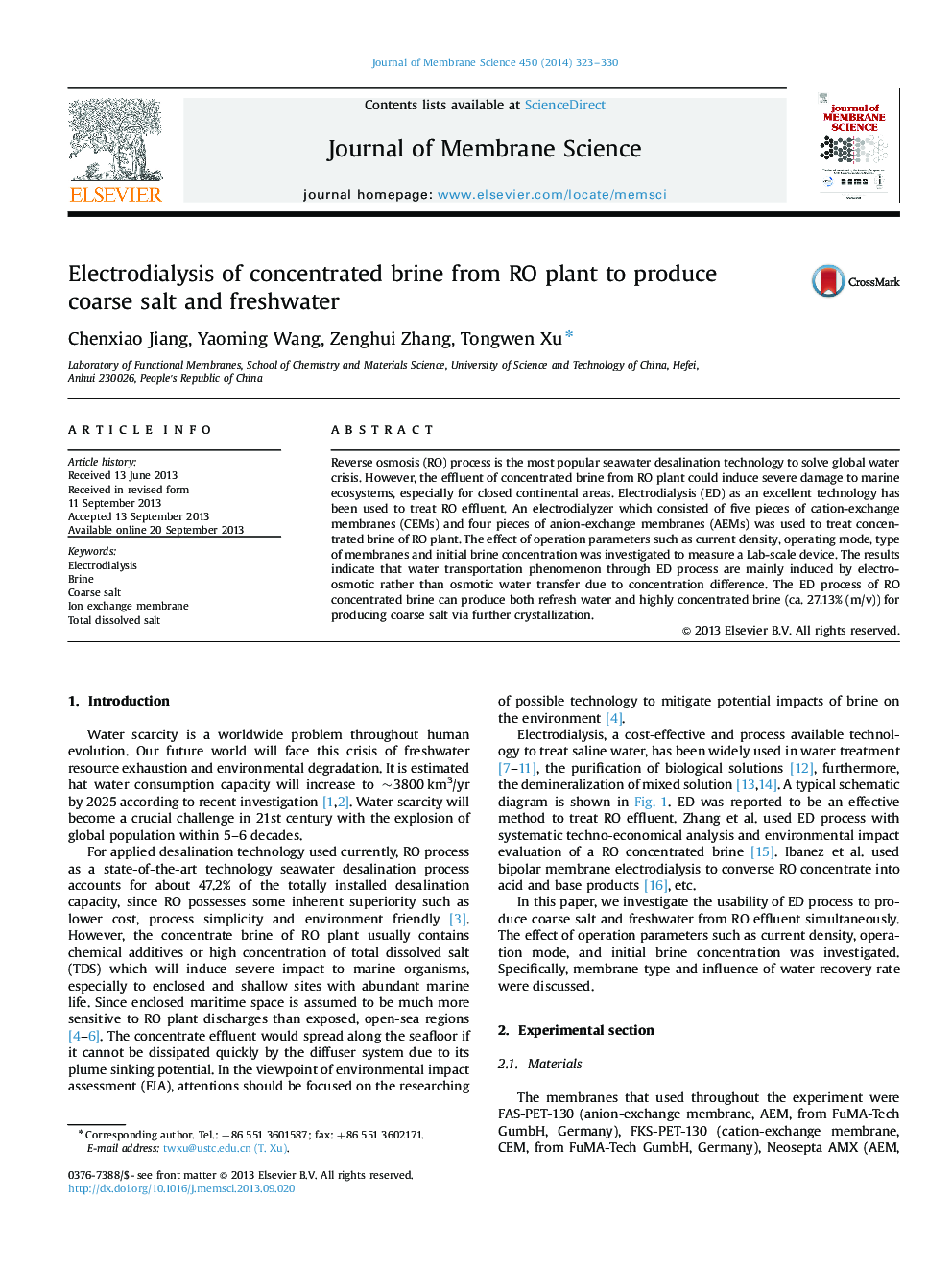| Article ID | Journal | Published Year | Pages | File Type |
|---|---|---|---|---|
| 633855 | Journal of Membrane Science | 2014 | 8 Pages |
Abstract
Reverse osmosis (RO) process is the most popular seawater desalination technology to solve global water crisis. However, the effluent of concentrated brine from RO plant could induce severe damage to marine ecosystems, especially for closed continental areas. Electrodialysis (ED) as an excellent technology has been used to treat RO effluent. An electrodialyzer which consisted of five pieces of cation-exchange membranes (CEMs) and four pieces of anion-exchange membranes (AEMs) was used to treat concentrated brine of RO plant. The effect of operation parameters such as current density, operating mode, type of membranes and initial brine concentration was investigated to measure a Lab-scale device. The results indicate that water transportation phenomenon through ED process are mainly induced by electro-osmotic rather than osmotic water transfer due to concentration difference. The ED process of RO concentrated brine can produce both refresh water and highly concentrated brine (ca. 27.13% (m/v)) for producing coarse salt via further crystallization.
Related Topics
Physical Sciences and Engineering
Chemical Engineering
Filtration and Separation
Authors
Chenxiao Jiang, Yaoming Wang, Zenghui Zhang, Tongwen Xu,
